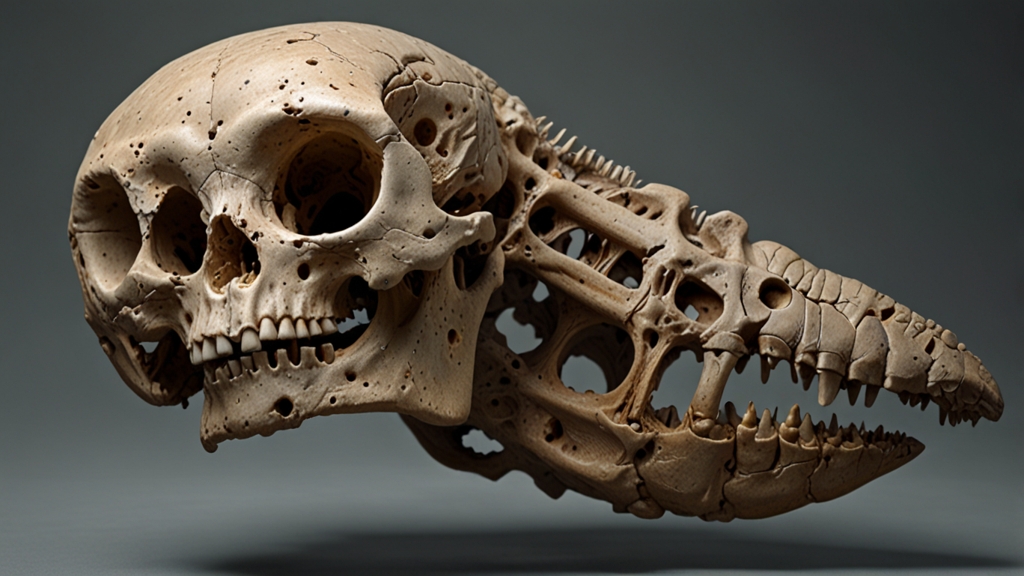Fossils That Rewrite History: Discoveries That Changed Our Understanding of Life
Fossils have always been a window into the past, offering glimpses into worlds long gone and species that once roamed our planet. Certain fossil discoveries, however, have done much more. They have fundamentally altered our understanding of life's history, pushing the boundaries of what we thought we knew about evolution, ecology, and Earth's history.
The Burgess Shale: Unveiling a Cambrian Explosion
One of the most remarkable fossil discoveries is the Burgess Shale in the Canadian Rockies. Discovered in 1909 by Charles Doolittle Walcott, these well-preserved fossils date back over 500 million years to the Cambrian period. The Burgess Shale offers an unparalleled look at a sudden explosion of life, known as the Cambrian Explosion, when numerous complex organisms rapidly appeared.
"The fossils of the Burgess Shale have provided critical insights into the early diversification of life. They have shown us that life forms hundreds of millions of years ago were much more diverse and complex than previously thought." - Dr. Stephen Jay Gould
These fossils include a stunning variety of ancient arthropods, sponges, and even early chordates, reshaping our theories about the rapid development of life forms during this period. The discovery suggests that evolutionary experimentation was far more complex than Darwin himself might have imagined.
Lucy: A Glimpse into Human Evolution
Perhaps no fossil discovery has been as sensational and impactful as that of Australopithecus afarensis, commonly known as "Lucy." Discovered in 1974 by Donald Johanson in Ethiopia, Lucy's 3.2-million-year-old skeletal remains provided crucial evidence of bipedalism in early humans.
"Before Lucy, many doubted that walking upright preceded the development of larger brains in our ancestors. Lucy made it clear: Our ancestors were walking upright significantly earlier than previously believed." - Dr. Donald Johanson
Lucy's discovery pushed back the timeline for bipedalism and forced scientists to rethink the evolution of human traits. It bolstered the idea that walking on two legs was one of the first major steps in human evolution, long before our ancestors developed larger brains or complex tools.
Feathered Dinosaurs: Bridging the Gap to Birds
The discovery of feathered dinosaurs in the Liaoning province of China in the 1990s was another monumental leap in our understanding of life's history. These fossils, including famous specimens like Sinosauropteryx and Archaeopteryx, provided compelling evidence that birds are, in fact, a lineage of theropod dinosaurs.
The exquisite preservation of feathers in these fossils showed that traits previously thought unique to birds were already present in certain dinosaur groups. This discovery bridged a major gap in evolutionary biology, illustrating the transition from non-avian dinosaurs to birds. It also sparked new debates and research into the function of feathers, suggesting they might have initially evolved for purposes other than flight, such as insulation or display.
Tiktaalik: The Fish That Walked
In 2004, a team led by Neil Shubin discovered Tiktaalik in the Canadian Arctic. This "fishapod," as it's sometimes called, is a transitional fossil bridging the gap between fish and tetrapods (four-legged animals). Dated to about 375 million years ago, Tiktaalik had both fish-like features, such as gills and fins, and tetrapod-like features, including a neck and robust ribcage.
"Tiktaalik is a prime example of a transitional fossil that shows how major evolutionary changes can be documented in the fossil record. It underscores the predictive power of evolutionary theory." - Dr. Neil Shubin
The find provided significant evidence of how vertebrates transitioned from life in water to life on land. It illuminated the path of evolutionary changes that led to the diverse array of land animals we see today.
The Impact of Fossils on Our Understanding of Life
These groundbreaking discoveries are just a few examples of how fossils have reshaped our understanding of life's history. They remind us that the story of evolution is far more intricate and surprising than a straightforward, linear progression. Each fossil find serves as a critical puzzle piece, offering deeper insights into the complex tapestry of life on Earth.
As paleontologists continue to unearth new fossils, our understanding of the natural world will keep evolving. These discoveries not only expand our knowledge but also fuel our curiosity about the past, inviting us to imagine the rich, dynamic history of life on our planet.






